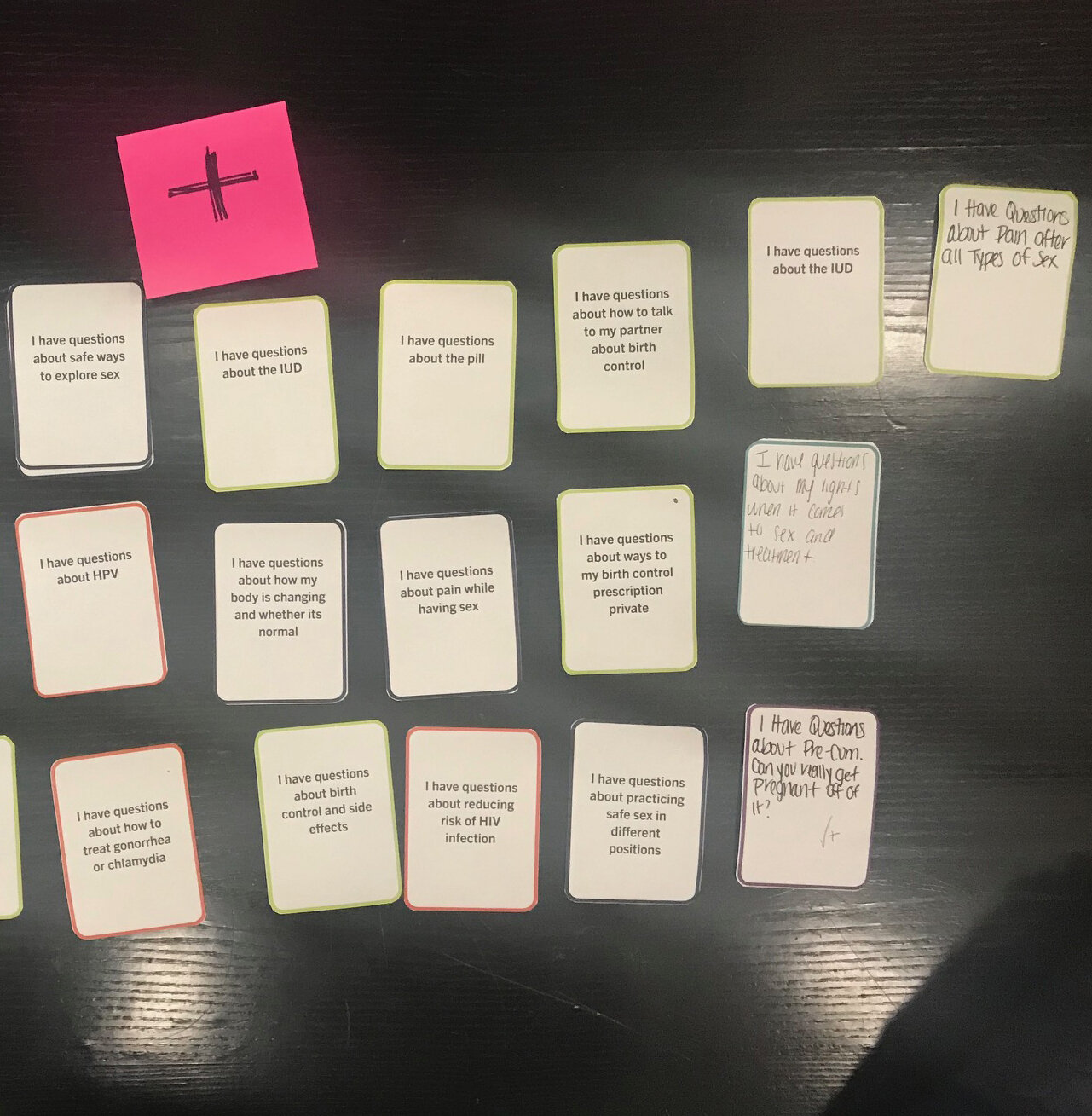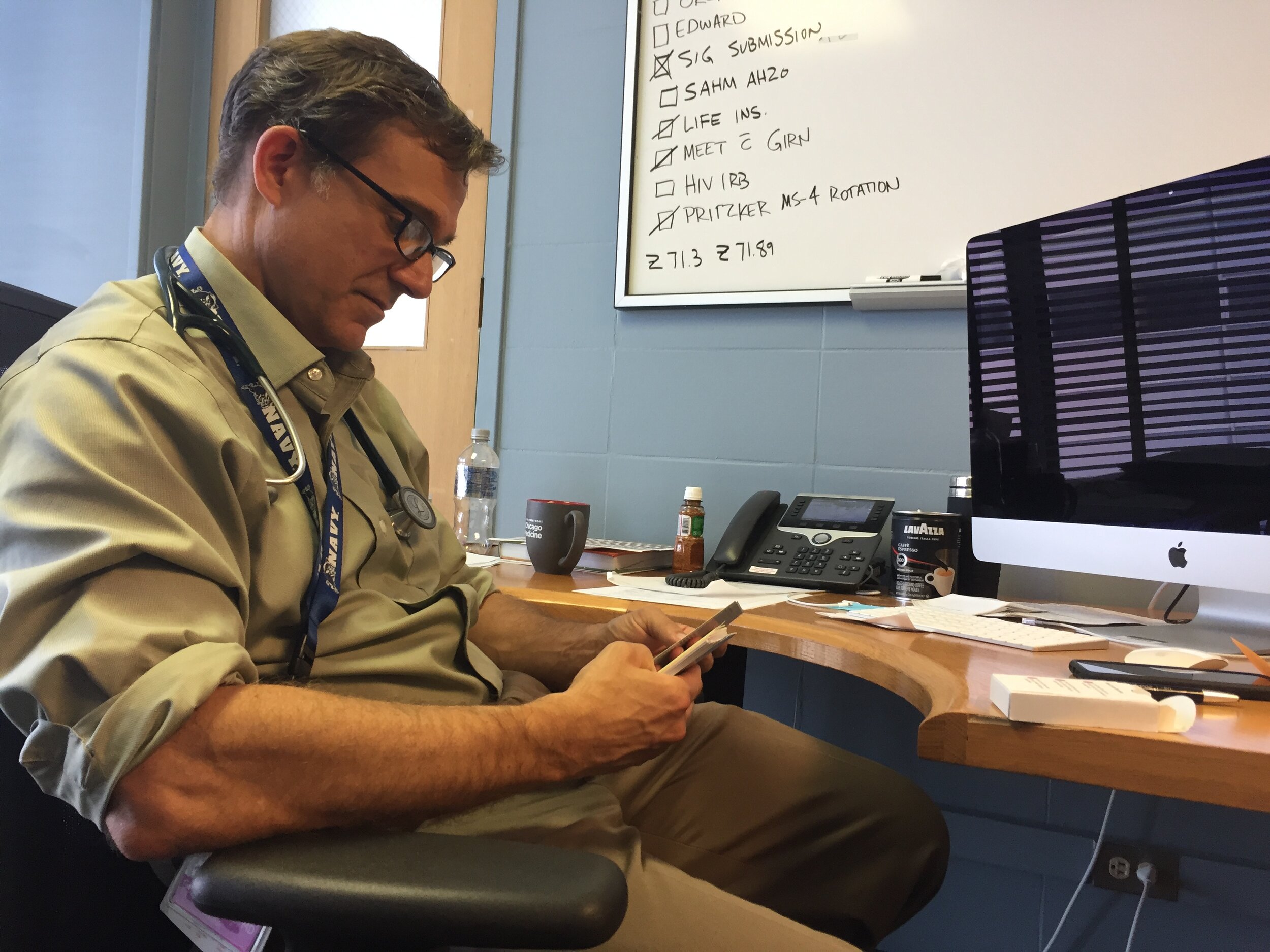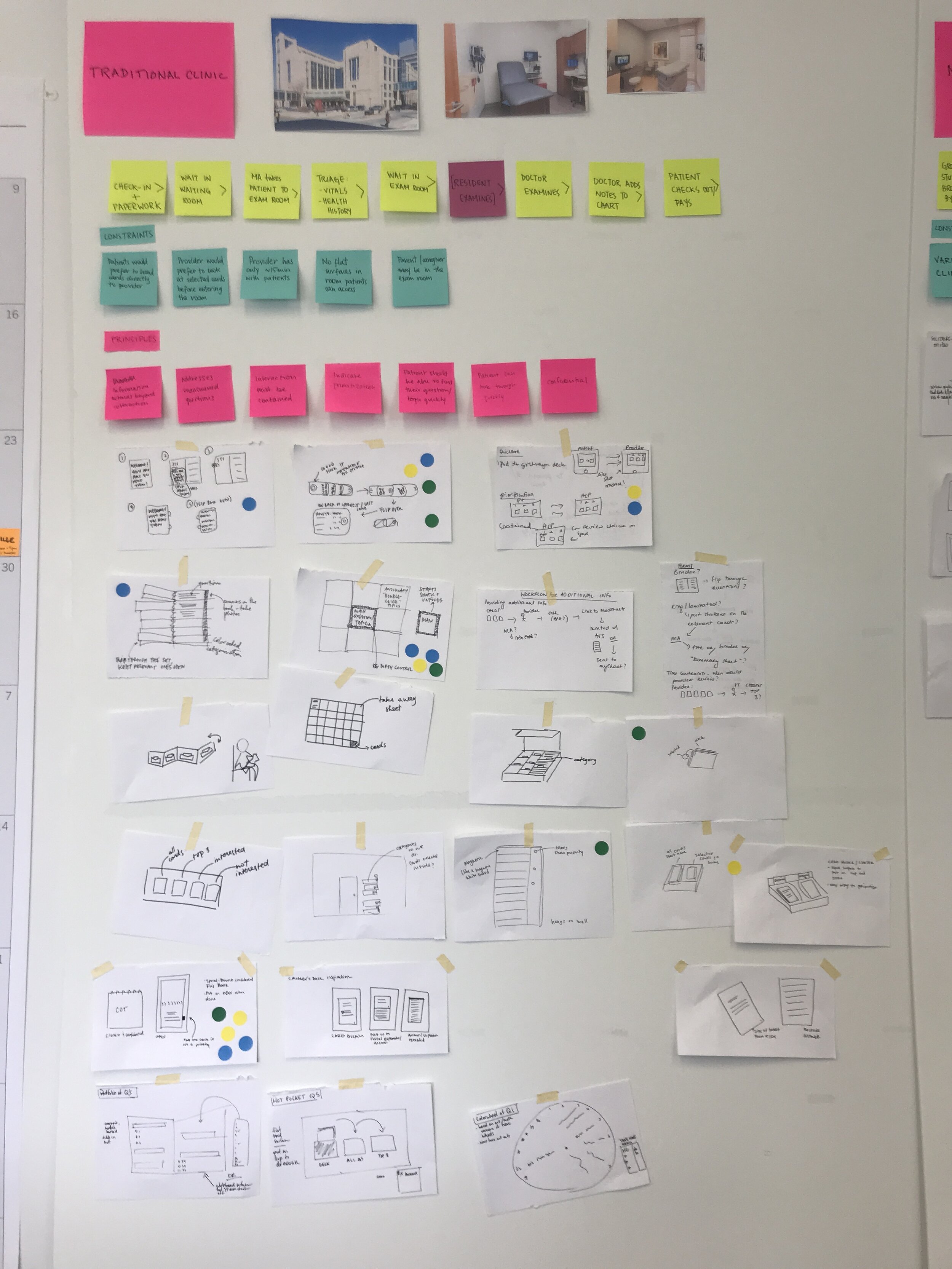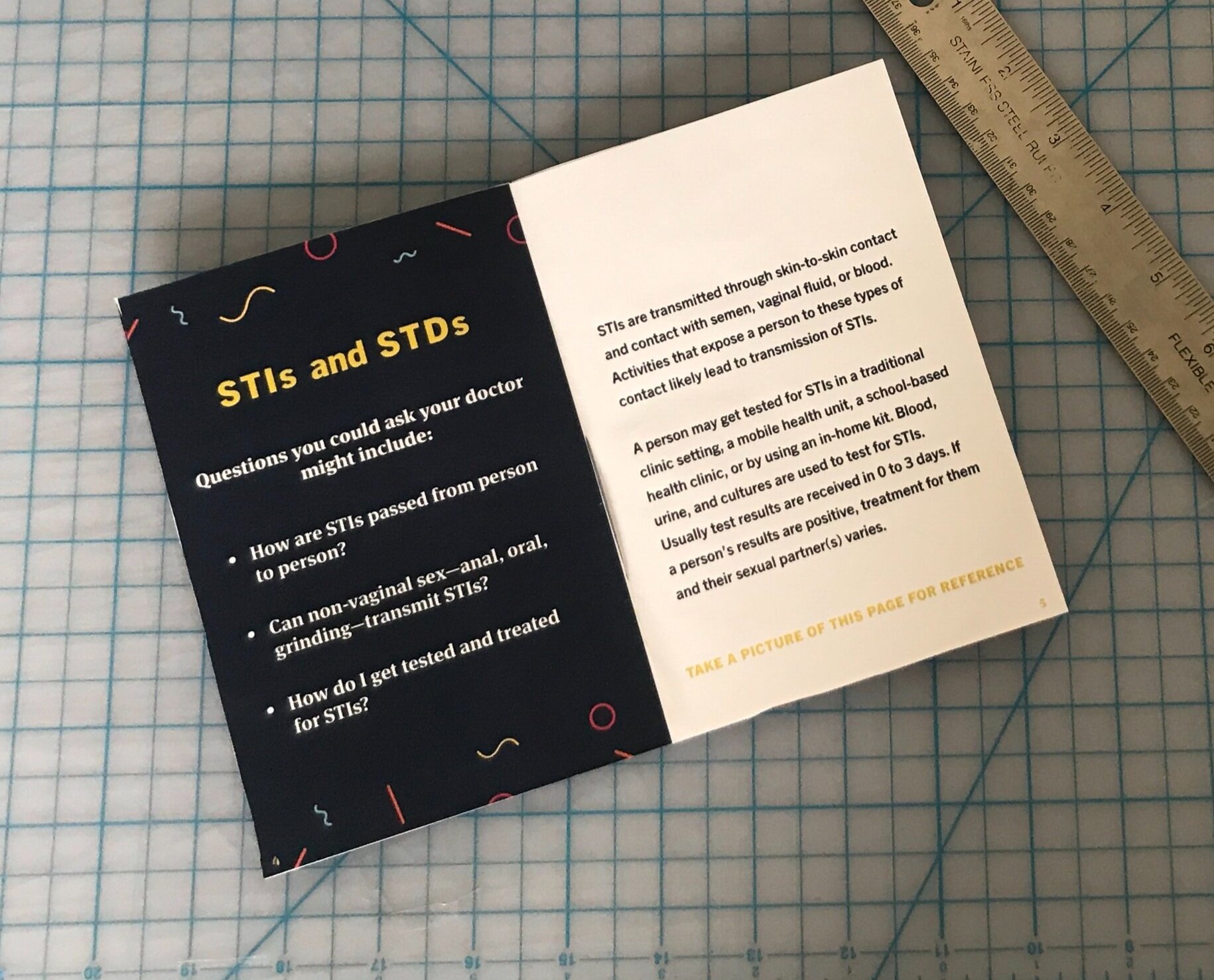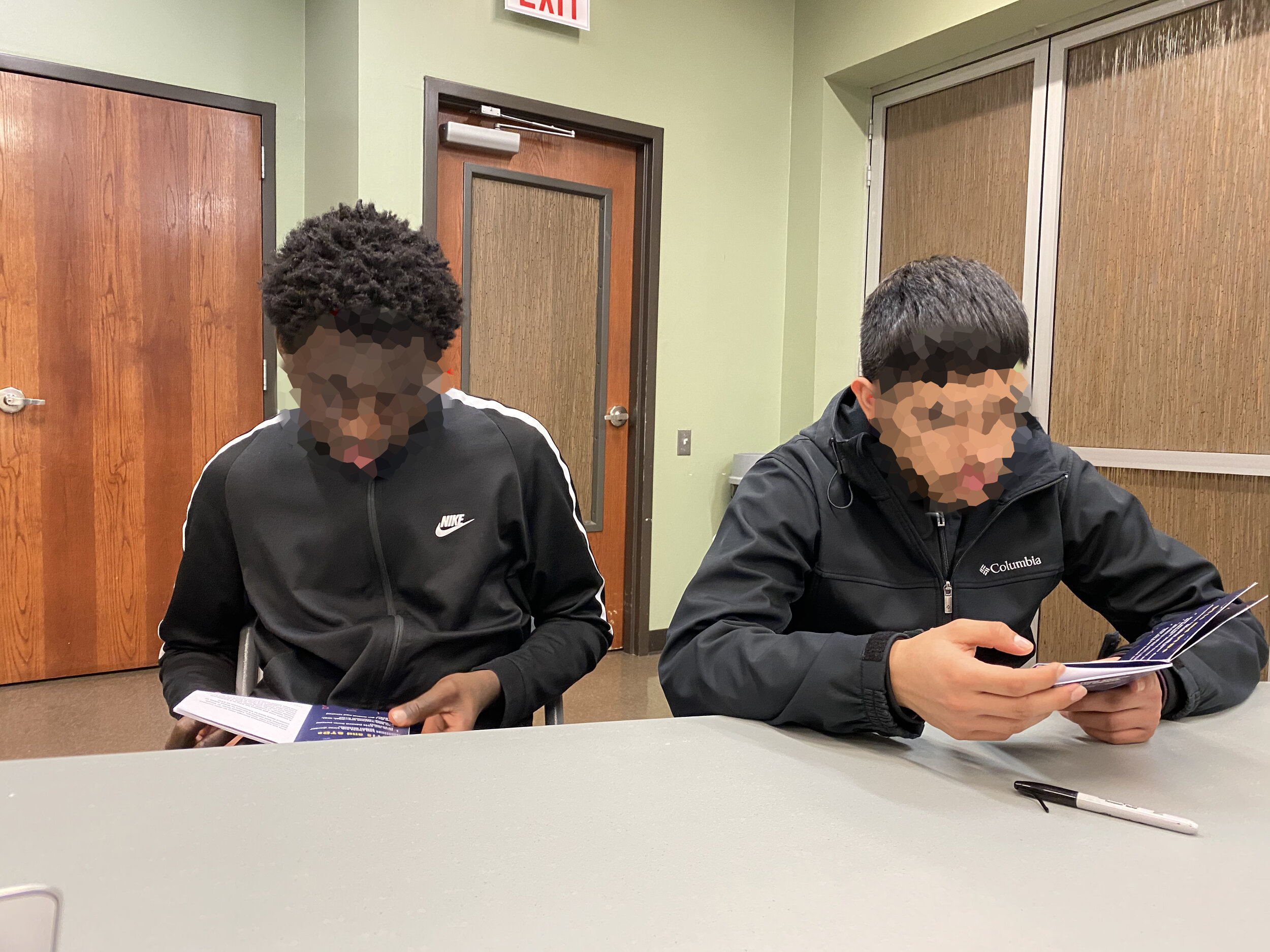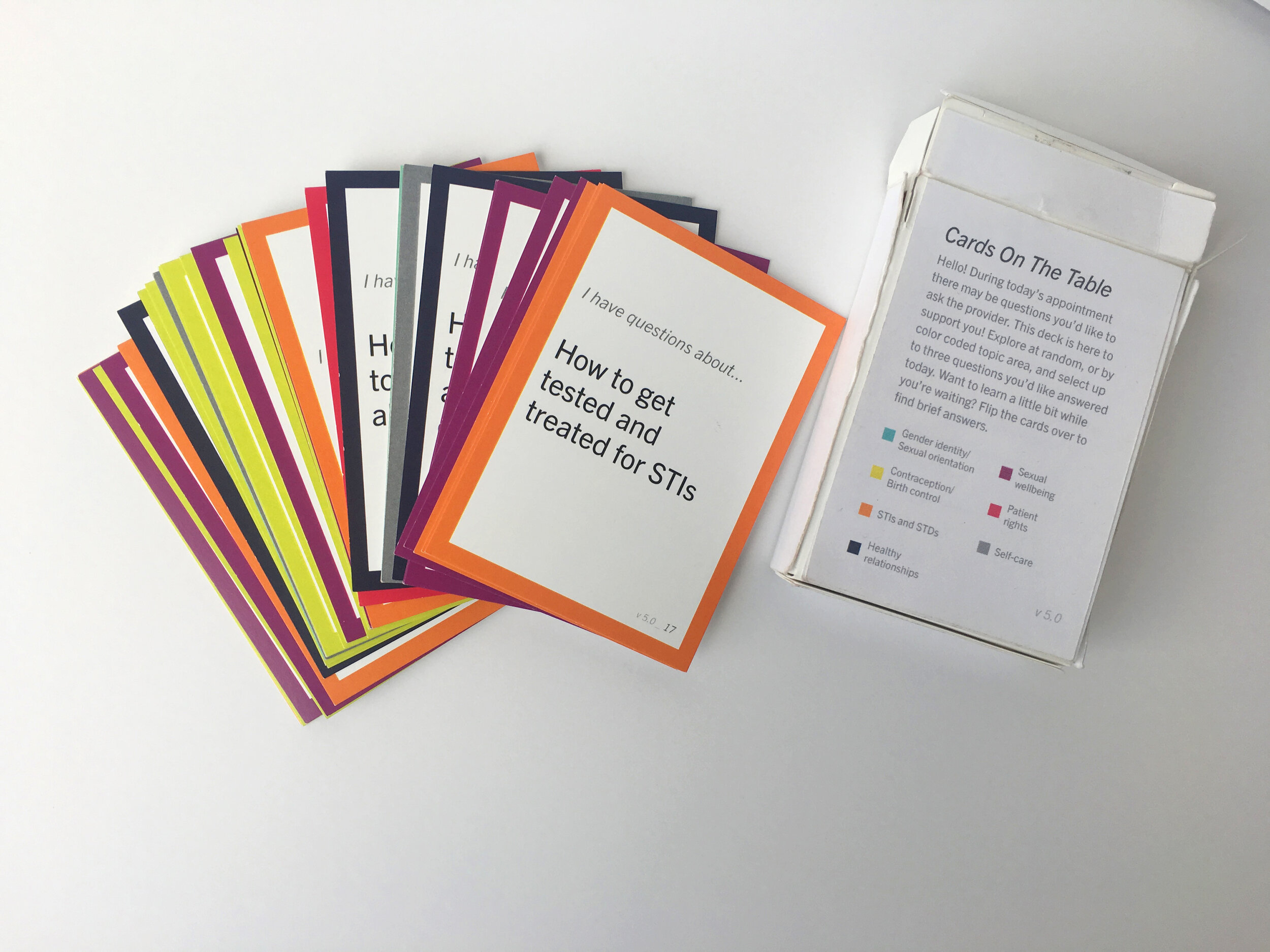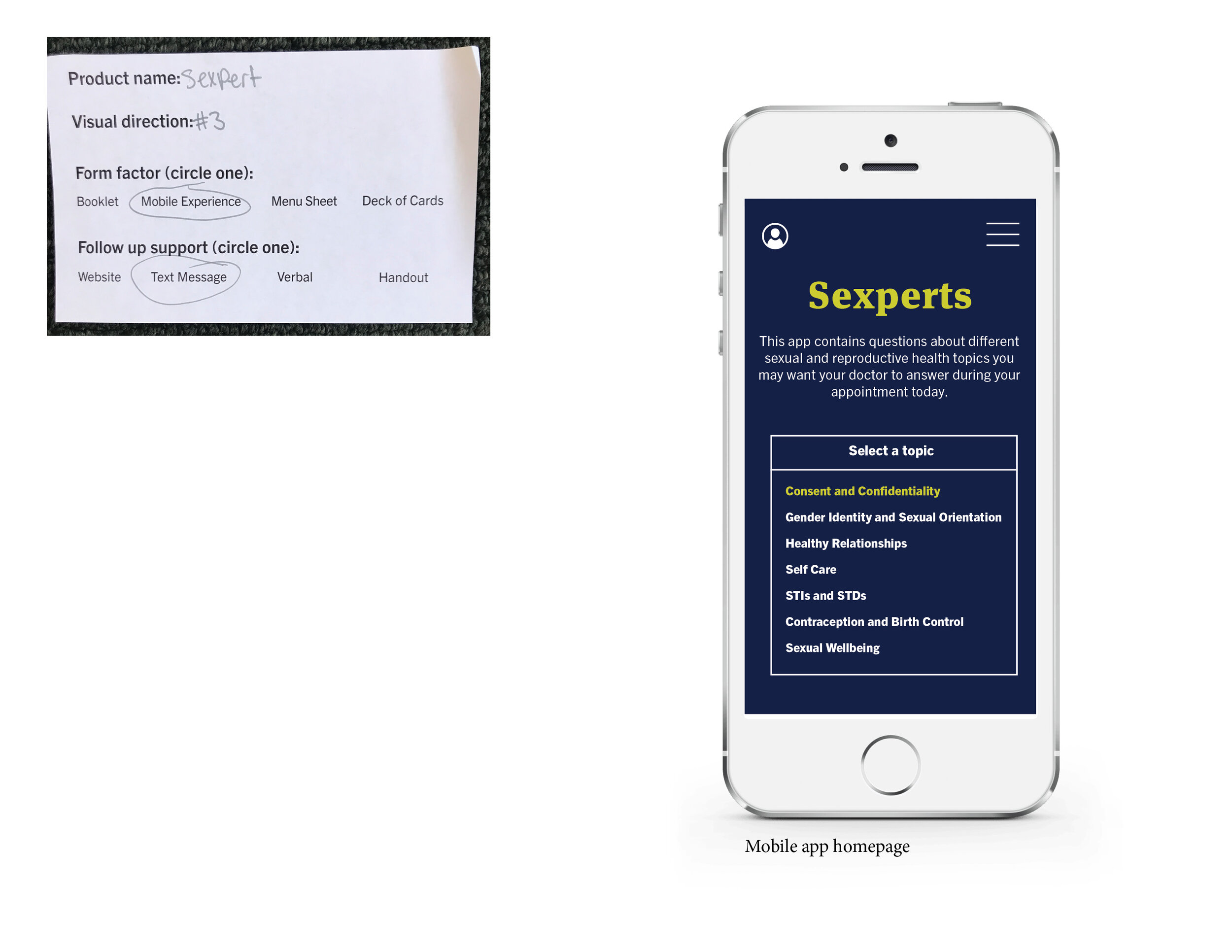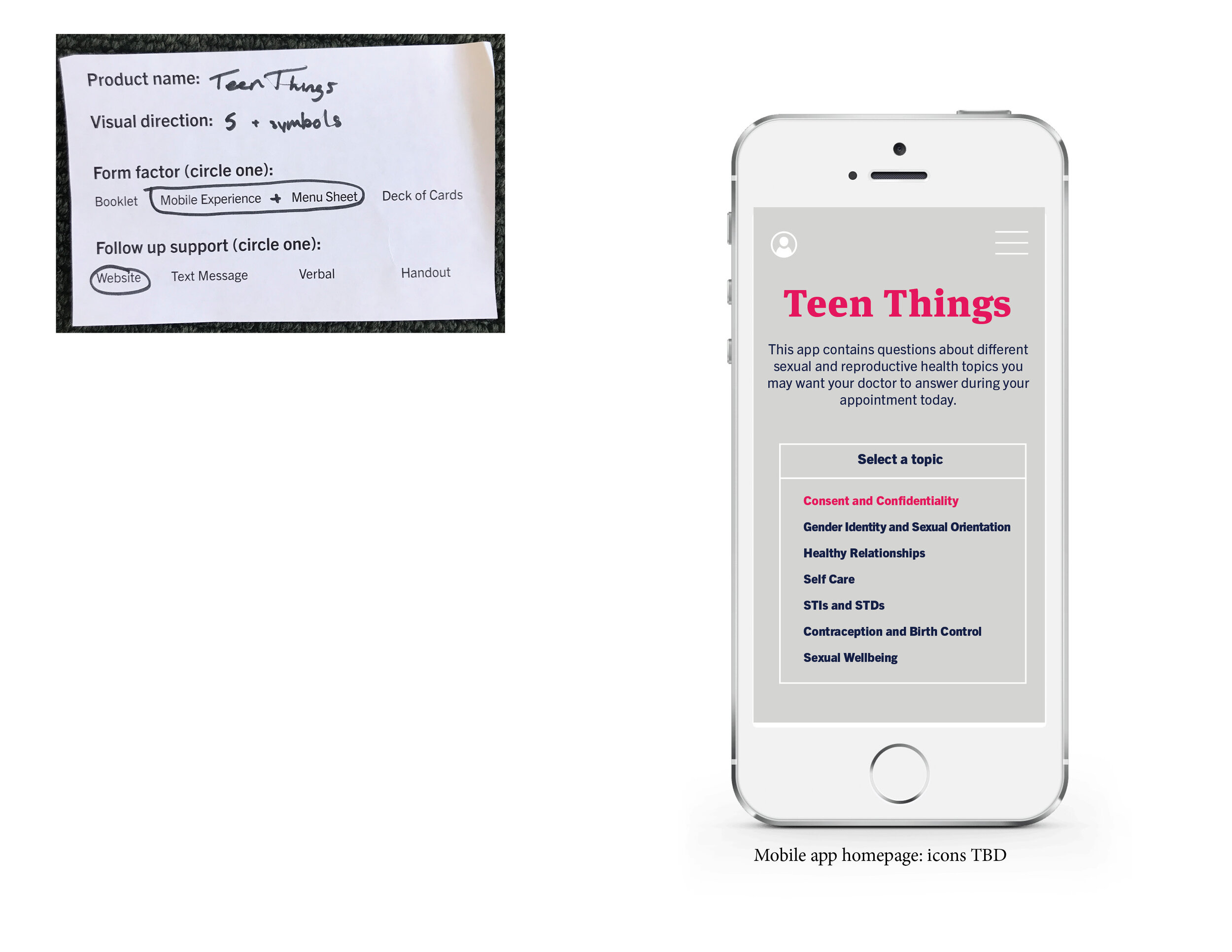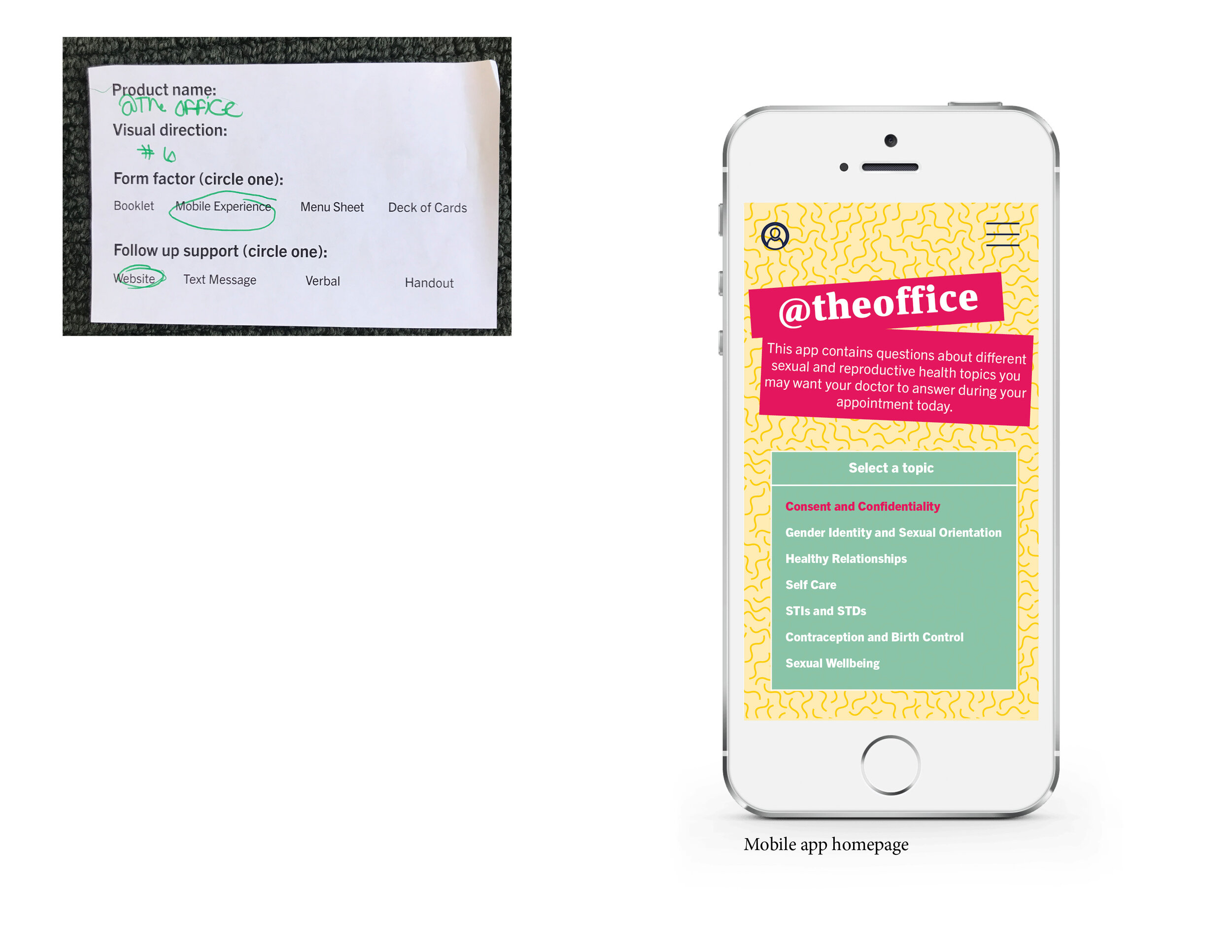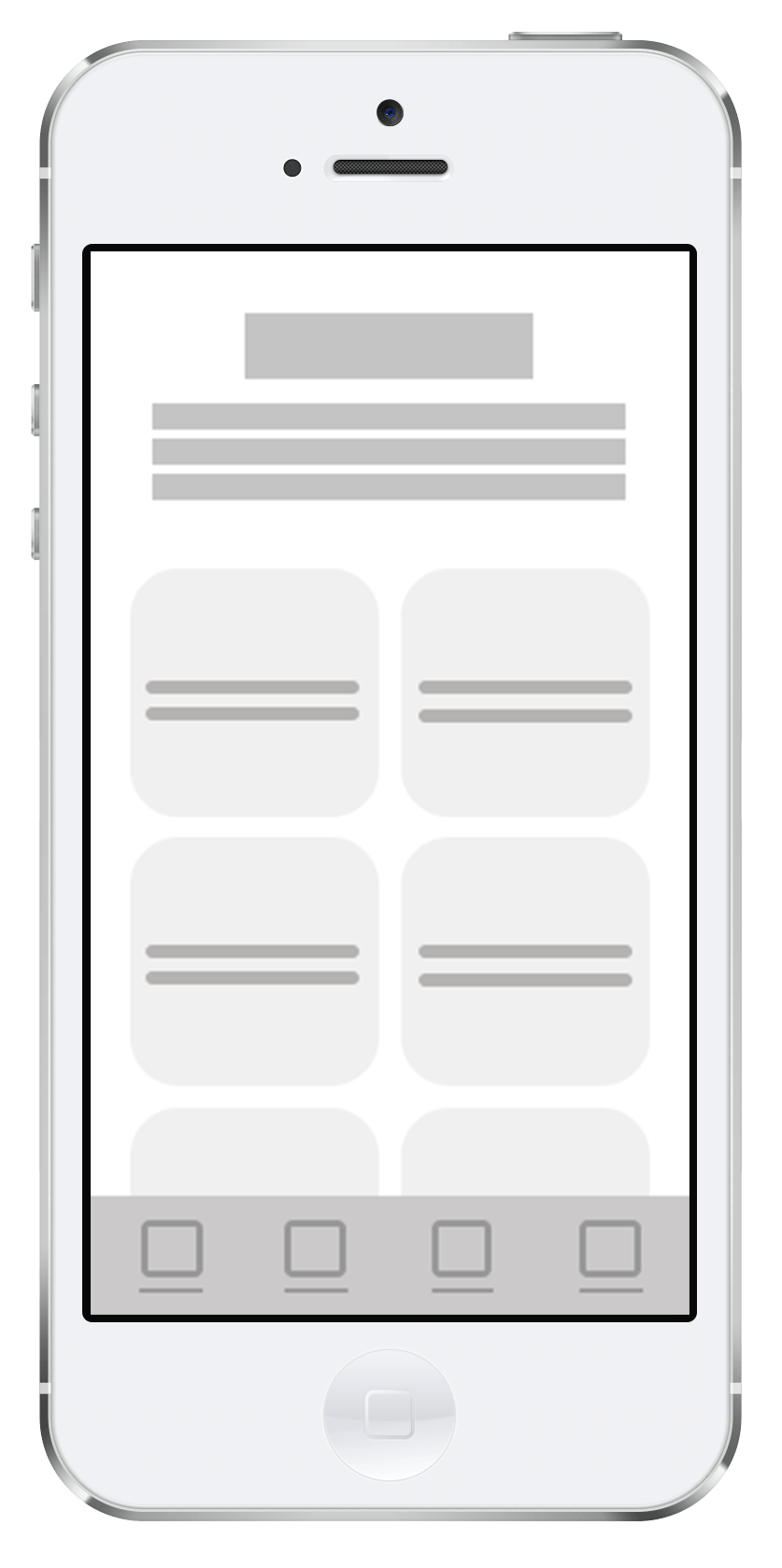“Let’s Chat” In-Clinic Intervention
Design Research + UX/UI
Opportunity
Asking sexual health and wellbeing questions is often nerve-wracking for adolescent patients. Sometimes, adolescents don’t have the confidence to ask a question or are unaware of the range of sexual and reproductive health topics they may have questions about.
Outcome
My team developed an in-clinic intervention that facilitates open and non-judgmental sexual health conversations between a patient and healthcare provider during their sexual healthcare appointment.
Research & Design Methods
In-depth interviews, workshop development & facilitation, co-design, competitive analysis, user flow, wire-framing, lo/high fidelity prototyping, usability testing, art direction, graphic design
Role
Design Researcher + Lead UX/UI Designer
Preliminary user research
The intervention idea for Let’s Chat synthesized from a series of exploratory workshops with healthcare providers and adolescents. My team kicked off the first phase of research by prototyping an initial set of sexual health questions with adolescents. After testing the initial content with adolescents, our team headed into clinic to test a second iteration of the cards. We tested the cards with adolescent patients while they were waiting in the exam room for their OBGYN provider. We also interviewed providers and clinic staff after the experience. After testing the cards in clinic, our team took a deeper dive into addressing form factor and user journey based on implementation barriers in a clinic setting.
Co-Designing with adolescents
Our team facilitated a series of co-design workshops with adolescents where we explored their ideal prototype for the intervention. We created an analog, lo-fidelity app to signal to adolescents that nothing was final and idea generation was welcome during small group brainstorm sessions.
Additionally, we tested three other analog form factors that all showed a variety of visual directions, tones, and content organization. Each form factor purposely carried its own constraints which allowed adolescents to critically react and critique their preferred user interaction.
After testing four prototypes, we asked participants to build their ideal prototype based on the visual directions, form factors, tone, content organization, and follow up support channel they experienced in the four prototypes we tested. Our team synthesized and translated their worksheets into mid-fidelity mockups along with design principles to share with key stakeholders.
The findings indicated that a majority of participants preferred a digital experience because it felt discrete, scannable, and easily shareable with friends. Since, most of the adolescents we work with have not received comprehensive sex ed, they perceived the app as dual-purposed. The app felt like a trusted, youth-friendly resource to find sexual health information as well as a way to save and ask questions they might need further clarification on from a healthcare provider. The visual design, tone, and “bite-size” amounts of information with resource links were also important to the efficacy of the app.
Let’s Chat: Context of Use
Let’s Chat App: User Flow
We co-designed the user journey and app user experience with adolescents, giving them activity packets where they designed their ideal clinic experience and their ideal app experience.
From lo-fidelity to medium-fidelity wireframes
As next steps, the progressive app will go into development and a clinical study.

